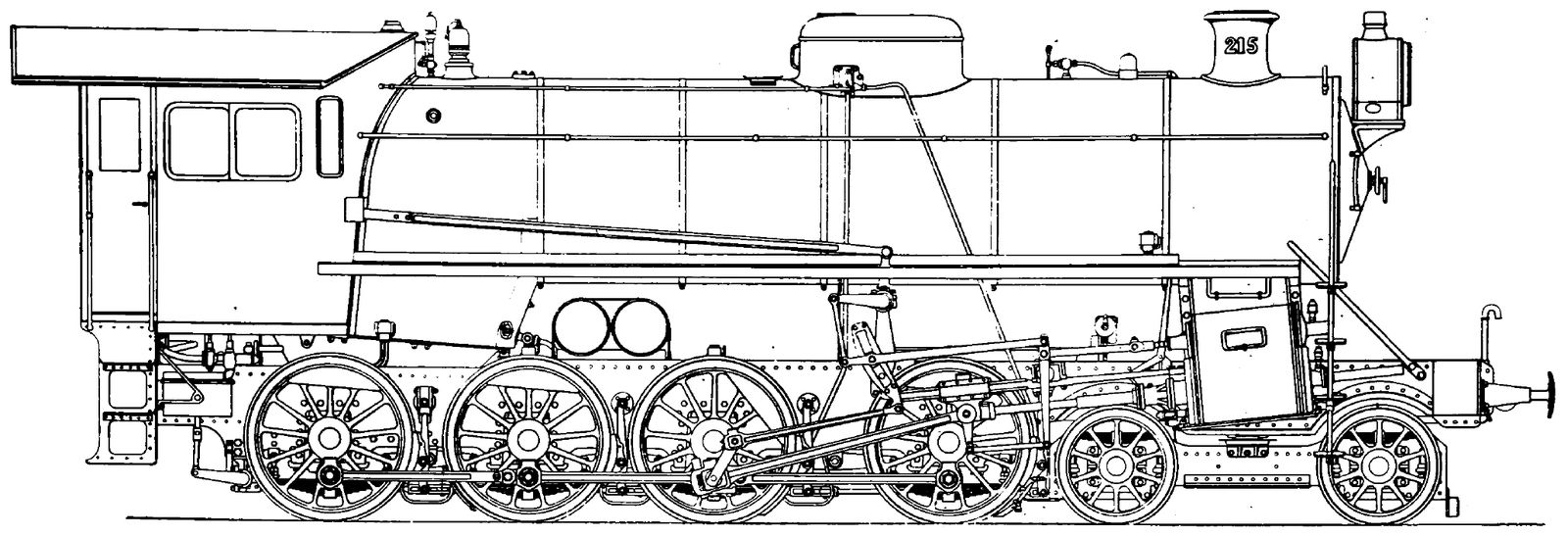The Bergensbane, or Bergen Railway, connects Oslo with Bergen and, despite a large number of tunnels, has challenging gradients, so that the express trains at the beginning of the century had to rely on pilot locomotives. For this reason, the NSB launched an invitation to tender for a powerful express train locomotive that should be able to cover this route without double-heading. The route has a constant gradient of 2 to 2.1 percent over a length of 70 km, which culminates at an altitude of 1301.7 meters at Lake Taugevatn and has curve radii of 180 meters. However, the tracks required a maximum axle load of twelve tonnes, while a locomotive with four cylinders was specified to further reduce the loads on the rails.
The winner of this tender was the locomotive later designated as the type 26, which was designed by the Schweizerische Lokomotivfabrik in Winterthur. The required power was achieved with four coupled axles and a leading bogie. Thanks to the boiler being placed very high, it was possible to accommodate a wide firebox without a trailing axle. The locomotives were able to haul trains weighing 200 tonnes at 35 km/h on the aforementioned incline.
The three locomotives delivered by SLM in 1910 were designated type 26a and were, however, somewhat lighter than expected. In order to be able to fully utilize the available axle load, two more units were ordered from Thune in Oslo, which were a bit heavier and were designated type 26b. The largest sub-series with 17 units was the type 26c, which was designed as a compound machine due to the high steam consumption of the four cylinders. It was supplied by several manufacturers between 1919 and 1924.

Schematic drawing
Locomotive Magazine, August 1917
As early as 1915, the type 26 locomotives were withdrawn from the Bergen Railway, as the latter had been converted for a higher axle load and the heavier type 31 locomotives were now being used there. Thanks to the small coupling wheels, they were suitable for all types of trains and were therefore used in different parts of Norway in different roles. Rebuilds took the form of an oil-fired engine in the 1950s and the fitting of an engine with a larger boiler in 1961. The locos survived until 1969, when the last year of steam service in Norway had struck. Two pieces were kept in reserve in 1970 in case diesel locomotives failed.